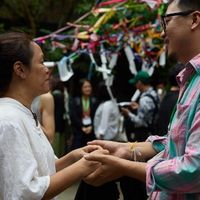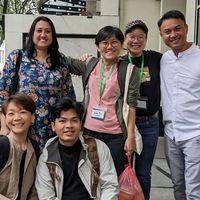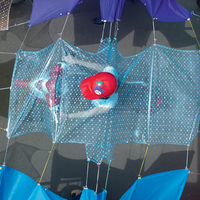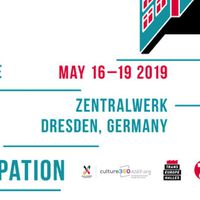Are Grassroots Cultural Practices in Asia Inherently Unsustainable?
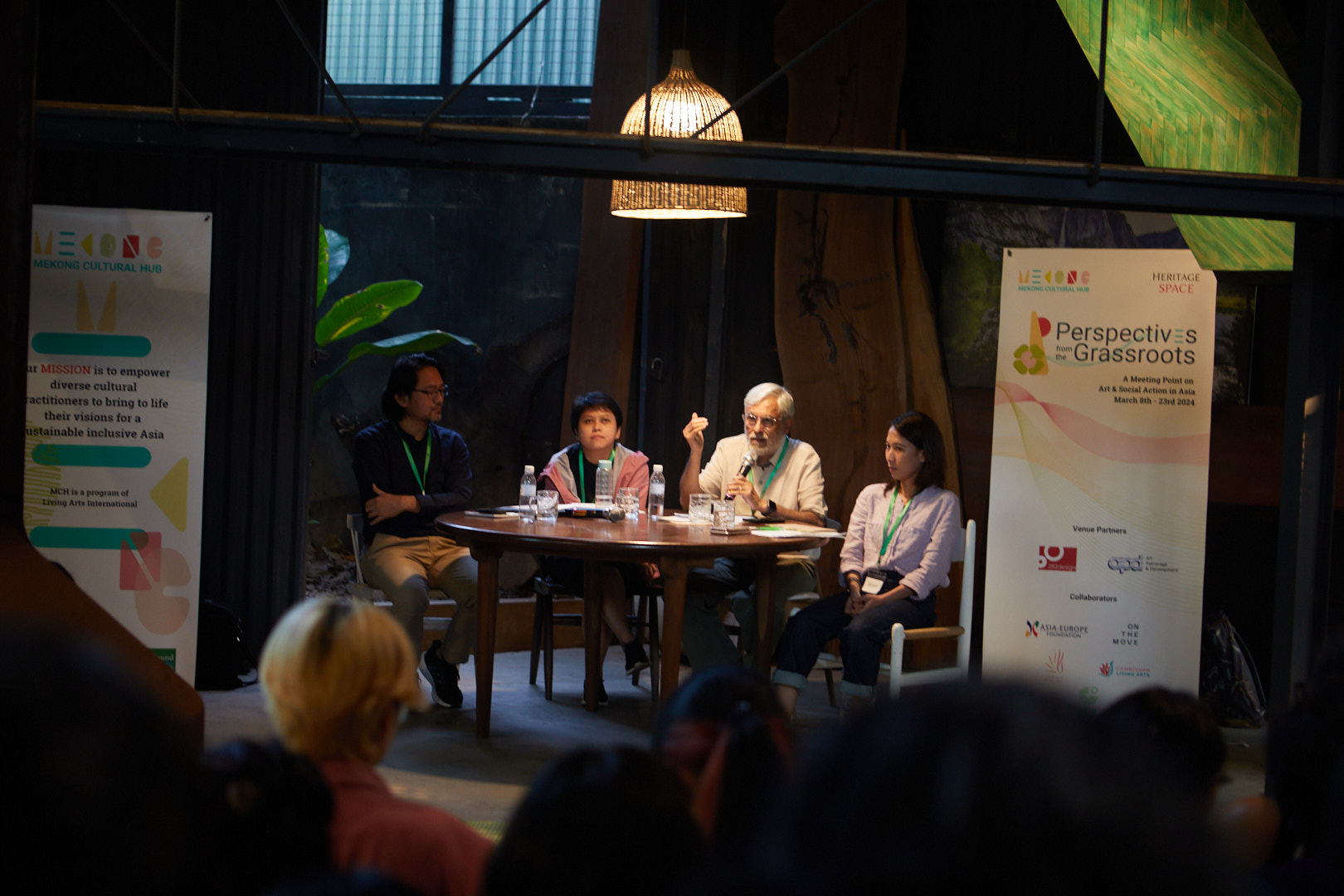
This article was written by culture critic and writer Sharmilla Ganesan in response to the conversations that occurred during Meeting Point 2024, organised by the Mekong Cultural Hub in Hanoi, Viet Nam from 21 to 23 March, 2024.
The Meeting Point was the culmination of a series of online events and local gatherings, and saw the coming together of cultural practitioners from all over Asia, who largely operate within the grassroots arts organisations space. The gathering offered a platform for these practitioners to share their experiences, highlight challenges, and discuss possible future directions. The following is a reflection on what those future directions could look like.
Not many events manage to simultaneously celebrate and call into question their own premise - and yet the Mekong Cultural Hub’s 2024 Meeting Point on Art & Social Action seemed to do exactly that.
Themed “Perspectives from the Grassroots”, the recent three-day gathering in Hanoi, Vietnam, brought together grassroots cultural practitioners from Asia to “capture a snapshot of the issues that (they) are grappling with today”.
The stories and conversations that were brought to the forefront highlighted over and over why the work done by these grassroots organisations are so essential - not just in terms of artistic output but in addressing vital needs and gaps that exist within the larger social context of the countries in this region.
We heard about the revival of threatened instruments and music forms through community initiatives in Indonesia and Cambodia, and how craftmaking is being used to economically empower communities of women in India. We were given insights into a landmark initiative, the first national museum in Japan to honour its indigenous peoples, the Ainu. Meanwhile, practitioners from Myanmar shared how art and artistic practices offer a way to both talk about and contend with the political upheavals in their country over the last few years.
Yet, it was striking how many conversations also had an underlying theme of unsustainability: over and over, stories of people and organisations stretched to their limits, prioritising the larger cause over their own wellbeing, the continuous seeking of financial support draining their capacity to do the actual work, or relying on often uneasy relationships with governments, corporations, or international organisations.
An Uneasy Tension
The “perspective from the grassroots” here then, seemed to be an uneasy tension between the recognition that this work is urgent, meaningful, and essential, and the awareness that it is very often carried out by people who earn too little, work too hard, and live with a fair amount of anxiety around when resources might run out.
Which begs the question: are grassroots arts practices and organisations in Asia inherently unsustainable? Put another way, is the field ever likely to achieve a truly sustainable way of operating? And is that even a fair expectation, given the many restrictions they operate under in the region, or is precariousness just their reality?
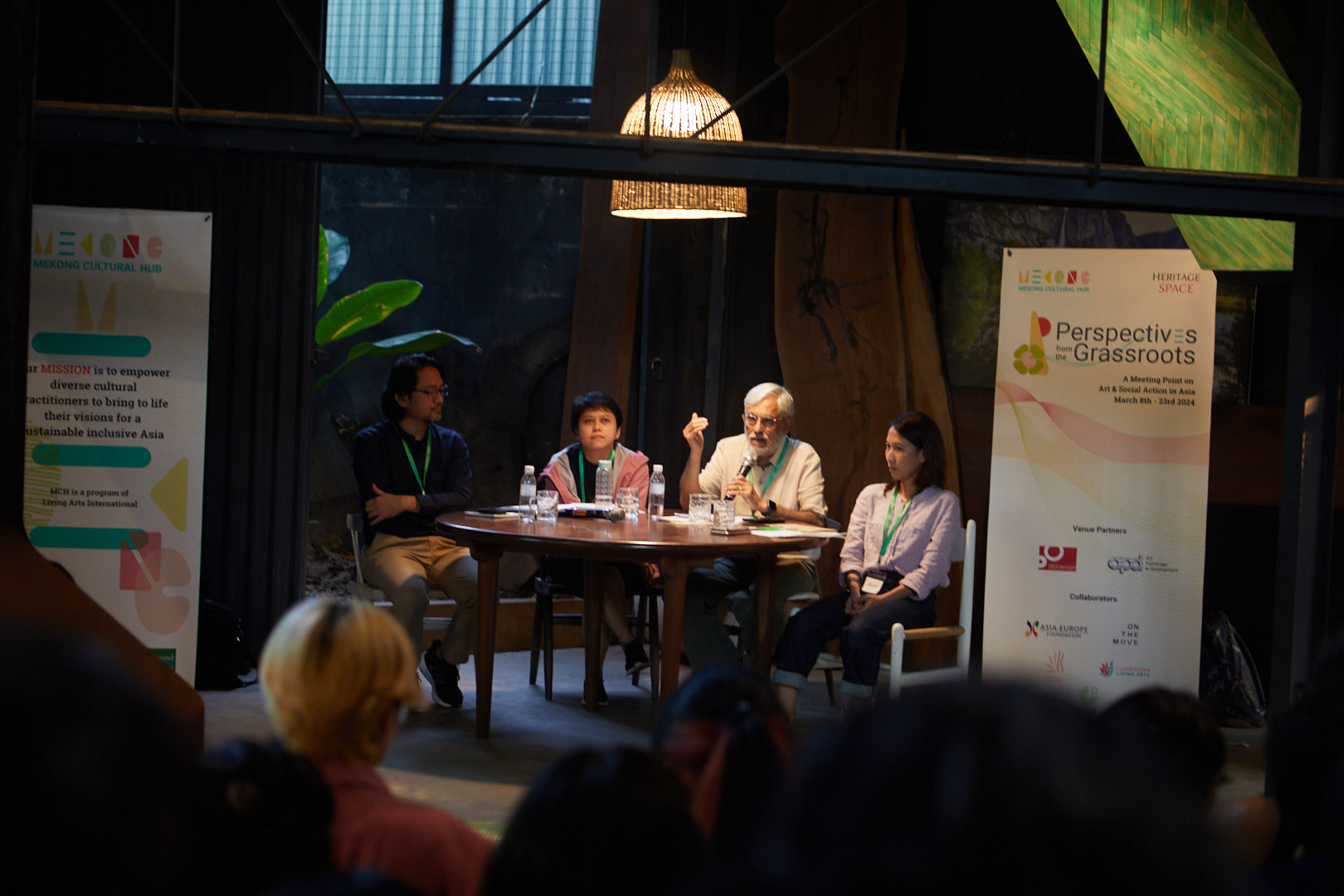
1. The opening panel, titled Caught in the Middle, presented the perspectives of cultural intermediaries. © Mr. Hoang Nguyen and Ms. Ngo Tran Phuong Uyen.
These tensions weren’t lost on the folks attending or speaking at the gathering. In a panel titled Caught in the Middle that presented the perspectives of cultural intermediaries, Oming Putri, partnership manager at Koalisi Seni, an Indonesian art policy advocacy body, emphasised that advocating for just and sustainable systems should be applied within grassroots organisations as well.
“(To practise what we’re advocating for), we need to strive for institutional sustainability. This includes professionalising our staff, as well as ensuring proper compensation and recruitment,” she said.
However, when one considers how most grassroots cultural organisations are structured and operate, it becomes clearer why institutional sustainability can often prove challenging.
The session Life Cycles of Grassroots Cultural Organisations in Asia offered some insight. Here, six practitioners from six different countries shared their observations after having spent the last few months investigating and discussing how grassroots cultural organisations operate in this region.
They pointed out that organisations in Asia tend to comprise small teams that are leader-led and “run like a family”. They often run on local knowledge and cultural capital, and commonly rely on diverse and shared resources, which could be a mix of public funding, crowdfunding, and providing services.
It isn’t hard to extrapolate that these factors don’t easily lend themselves to long-term sustainability, and that the push and pull between constantly seeking resources and doing impact-driven work, can often mean something has to - and does - give.

2. The Life Cycles of Grassroots Cultural Organisations in Asia session brought together cultural practitioners from different countries to share their observations after having spent the last few months investigating and discussing how grassroots cultural organisations operate in Asia. © Mr. Hoang Nguyen and Ms. Ngo Tran Phuong Uyen.
There is Always More Work to Be Done
One observation that emerged from this session went on to inform many of the conversations that occurred throughout the Meeting Point - that of motivation. In listing what motivated many of these practitioners and organisations, the notion of it being seen as a “cause” came through very strongly. This of course is not without reason; for many of these organisations, culture and the arts are not separate from advocacy and social justice.
“The motivation for this work is often linked not just to a cultural context, but also the local social context,” said Madhura Dutta, a development sector professional working in rural India. “Many of these organisations came about to address a gap that exists in the social landscape.”
The challenge with this, though, is that there is always more work to be done. And the sector, it seems, attracts people who typically place the work - the cause - over themselves.
Hitting Pause: Examining Purpose & Practice addressed these complications through a very human lens. The session featured five practitioners who spent the past eight months examining their own “unsustainable” behaviours - and what it means to care for one’s own wellbeing amidst doing work that is very often viewed not as a job, but as a mission or calling.
They began with a few digital polls that the audience participated in. First, when asked why they do what they do, the top words that emerged as answers were: social change, impact, and community. Then, when asked what drew them to a project, the top answer was “It is an important/interesting project”; the bottom was, “It pays well”. (Tellingly, these responses seemed to surprise no one, and were accompanied by rueful laughs and exchanged glances of solidarity.)
A neat encapsulation of the problem, as it turned out. Because when an industry that is already struggling for resources is largely made up of people who value social impact and community over compensation, unless intentional guardrails are in place to ensure care for its workers, it is likely the people themselves who are sacrificed in this pursuit of the greater purpose.
“There is a personal cost to the work we do (in grassroots cultural organisations), and a personal cost to the way we do work,” said Kathy Rowland, managing editor of Southeast Asian arts organisation ArtsEquator and curator of this session.
This was a sentiment echoed by each of the speakers in the discussion, who shared the ways in which their work began exacting a toll on their lives, relationships, and mental health. They also talked about how this notion of “hitting pause” helped them re-evaluate both their own practices as well as the ecosystems they operated within, whether that meant saying no to work, choosing to step back from an organisation, or simply deciding to take a break.
And while this process hasn’t (yet) led to larger solutions, it felt like an important acknowledgement, especially when situated against a theme like “Perspectives from the Grassroots”.
“I realise we’re in a position of privilege to even be able to say, I can ‘pause’. And because we have this privilege, instituting these personal boundaries and small changes in our practice can be a way to show that this is possible. That this is something we should be thinking about,” said Singaporean creative producer Fezhah Maznan.
“Personal choices can be a form of advocacy, a form of resistance, that can lead to long-term change, “ added Rowland.
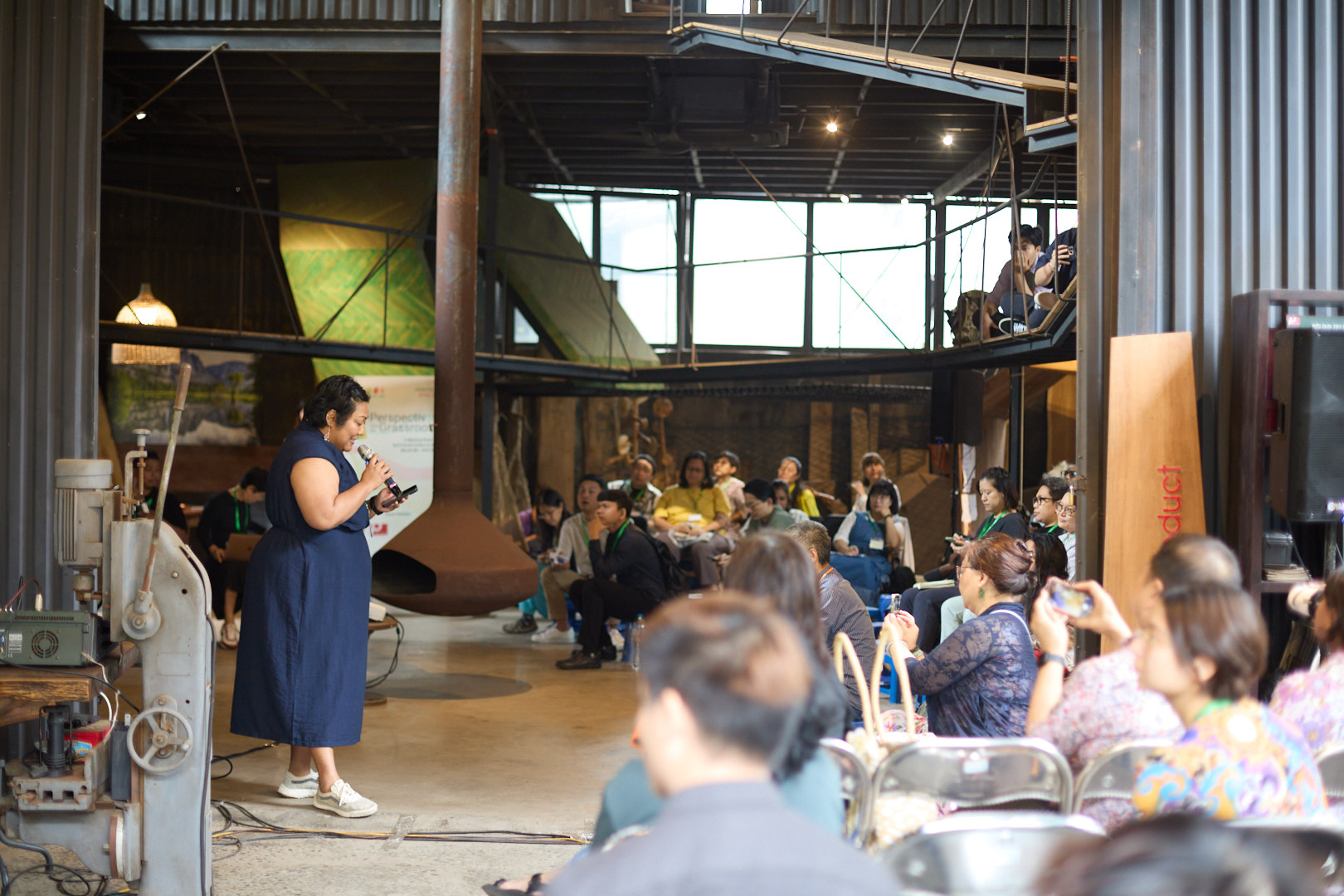
3. Singaporean creative producer Fezhah Maznan was one of speakers who shared her own experiences with taking a career break during Hitting Pause: Examining Purpose & Practice. © Mr. Hoang Nguyen and Ms. Ngo Tran Phuong Uyen.
Systemic Solutions for Sustainability
That said, the Meeting Point also hit home that individual actions alone will not catalyse the changes the field requires; the systemic nature of the problem requires systemic solutions, and from a wide range of stakeholders.
In Caught in the Middle, Sokhorn Yon, program director at Cambodian Living Arts, talked about funders who were willing to look beyond the short-term or project-based model of grant-giving.
“Funding organisations who are willing to provide core support are very important, for example multi-year funding of five to 10 years. This frees up grassroots organisations from having to constantly source for funds, and to only be able to plan for the short term,” she said.
In Life Cycles, meanwhile, Vietnamese writer and dance advocate Xuan-Tung Le talked about the potential for grassroots cultural organisations in Asia to rely on each other to survive, by creating joint systems and sharing resources.
Dutta echoed this, pointing out that opportunities for exchange and collaboration within Asia are currently fewer than similar exchanges between Asia and the so-called global North.
“We need to look at how more organisational exchanges can happen, not just artist to artist exchanges,” she said.
These conversations pointed at early steps towards some sort of change; as much as we might have wanted, it’s certainly simplistic to expect the 2024 Meeting Point to provide a solution to how grassroots cultural organisations in Asia can become sustainable. It did, however, feel like a turning point to hear a whole gathering of practitioners acknowledge that the current system needed changing.
Cover Image: The opening panel, titled Caught in the Middle, presented the perspectives of cultural intermediaries. © Mr. Hoang Nguyen and Ms. Ngo Tran Phuong Uyen.
About the Author
Sharmilla Ganesan is a media professional, writer, and culture critic from Kuala Lumpur, Malaysia. She was previously a radio host with BFM 89.9, where she did shows on current affairs, arts, film, and books. She was also a features journalist with The Star newspaper for over a decade, where her areas of specialty included arts, books, and film. She wrote an award-winning column on books and literature for five years. Her articles have appeared in The Atlantic, South China Morning Post, NewNaratif, ArtsEquator, and Critics Republic. Sharmilla was selected for the Global Cultural Relations Programme in 2022, and is a former Asia Journalism Fellow (2017) as well as Fulbright/Hubert H. Humphrey Fellow (2015/2016).
Similar content
07 May 2024
By Ha Dao
30 Nov 2017
posted on
13 Sep 2019
from - to
07 Jun 2014 - 31 Jul 2014
By culture360
13 May 2019

